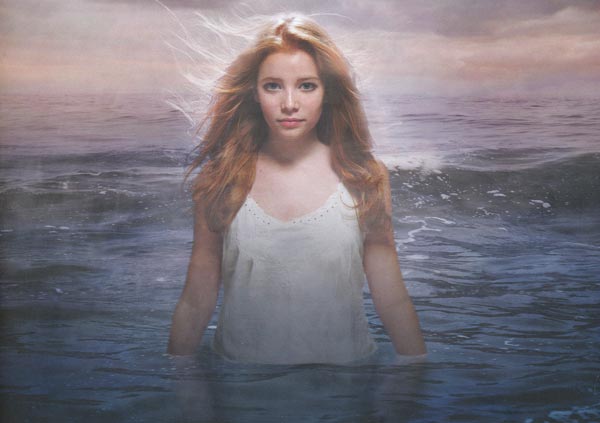BlogLatest updates from Kathryn Lasky

Researching Mermaids
So how do you go about researching something that simply does not exist –like mermaids?
Well, you begin by reading a lot of supposedly real mermaid sightings by --to be kind-- total crackpots who have reported seeing mermaids. It seems that the aquatic creature that is most frequently reported as being mistaken for a mermaid is a manatee—a kind of swimming hippo. Yes, quite fat and not exactly like our popular notion of a mermaid. Pretty soon you realize that there is no such evidence in the scientific sense for the existence of mermaids. This leads to the next question why have mermaids persisted in our literature, in our folklore and mythology? So I began by reading all the literature I could to try and discover people’s fascination. What is it that people yearn for that makes them want to believe in mermaids? This might strike some as an odd route to take since mermaids are mythical but by studying myth we begin to understand a lot about human nature and human psychology. By trying to understand this I can begin to build my own fictional characters—their motivations, their longings, their fears.
One really good book that I read as part of my research is Mermaid Tales from Around the World by Mary Pope Osborne, The book explores the roots of mermaid folk tales from a dozen or so different countries.
But my research is not simply about these mythical creatures. I have set my stories in the late 19th century. I have to learn as much as possible about the time and the environments in which my characters live. This is especially important for a lot of reasons, but primarily it is because the girls in my books who discover that in fact they are not quite human but mermaids are attracted to the sea a simple reason: it offers an alternate universe, one that is richer, freer than the repressive society of late 19th century America.
The first book Hannah begins on Beacon Hill in Boston. By trying to understand this environment I can begin to build the alternate reality of the underwater world that the girls find profoundly appealing. Hannah Albury goes to work for an extremely wealthy family as a scullery girl. I read dozens of books about how such a household operated. What was expected of the servants from the butler at the top of the servant ladder to the scullery girls at the bottom There was an old television series called Upstairs Downstairs that I re-watched that gave me invaluable information on life in such a house.
In addition to researching the subjects of domestic servants I also read extensively about everything from 19th century household cleaning products to medicines, home remedies, medical practice of that era, and cookery. But I also read a book, a laundry manual, on how clothes were washed, stains removed and whites beached before the days of automatic washers and dryers and spray on spot remover.
I live in the Boston area so my husband and I trooped all over Beacon Hill. He photographed everything from the handsome old houses to their doorknobs and the gaslights and the cobbled alleyways.
In the second book, May Plum lives in a lighthouse. I studied all about lighthouses and in particular I researched the Fresnel lense which was invented in the 19th century by the French physicist Augustin Jean Fresnel. Its large aperture and short focal length allowed much more light to pass through so that lighthouses could be visible from greater distances. In addition I read several accounts of the lives of lighthouse keepers and their families.
All of the Daughter of The Sea books have extended sections that take place in Maine. My husband and I have a summer house on an island in Maine. So I know the rocks, the birds, the ways of the sea. But I do keep navigational charts nearby as I write so I can check information about ledges, coves, harbors. I want to be as geographically correct as possible.
Want to learn about upcoming books?
please join our mailing list!